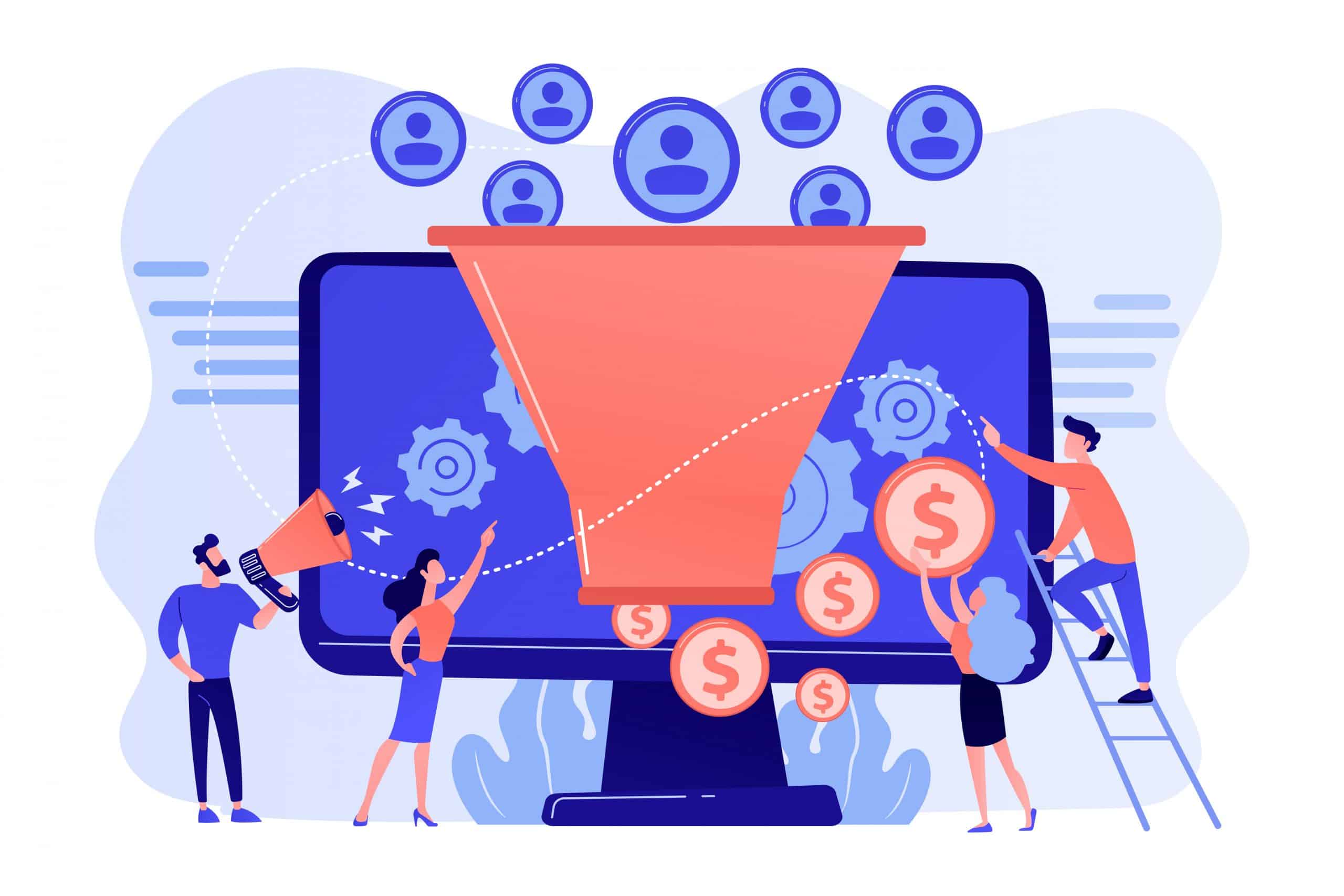Demand generation and lead generation are two terms that have been used interchangeably over the years. While demand generation is all about creating awareness and attracting clients’ interest in your business, lead generation solidifies this interest into continuous purchases. Both are vital to the growth of any business and though they work hand-in-hand, they involve several separate tasks.
A proper understanding of each is required to maximize their advantages, and we have broken it down into bits.
Read on to know what they both mean, their key factors, and the strategies that produce the best demand and lead generation.
What is Demand Generation?
Have you ever wondered how you remembered a product brand name you had never used before when randomly asked for a recommendation? That is the result of a successful demand generation campaign. So you ask, what exactly is demand generation.
Creating Awareness: The First Step to Engagement
Demand generation, as it is sometimes called, in basic terms, means convincing the desired audience why they need your products or services. It creates repeated awareness through laser-focused marketing programs to increase sales and long-term engagement for your products or services. We live in a world where consumers have varying needs they want to be met and dozens of alternatives to meeting these needs. A crucial step in sales is creating an awareness of the product with a prospective buyer.
Attracting Demand: Beyond Traditional Advertising
Creating a demand has gone beyond plastering your product or services on as many smartphone screens or billboards as you can lay your hands on. Brand-to-consumer relationships have proven to be a critical factor in generating demand. Building this relationship is data-driven, and it begins with attracting attention. This process is often continuous and could involve different marketing strategies. It is crucial in maintaining the attraction.
Building Brand Confidence: The Path to Consumer Trust
It would help if you also positioned the relevance of your brand rightly. The more your target clients become invested in what you do, the more open they are to engage with your brand. When properly utilized, demand generation positions your brand as the specialist within your industry, building the trust of your intended audience. All of this is targeted at consumer engagement. Now they want to know more. The correct positioning for your brand is key to demand generation.
Solving Problems: The Essence of Demand Generation
To attract sustained interest, you must first engage prospective clients on the problems they face and how your brand solves them. A rookie mistake would be assuming they know they need your product or services. Demand generation presumes your prospects are unaware, consciously or otherwise, that they have a need and, most notably, you can meet that need. Customers must know your product or service can be tailored to their requirements.
Key Elements of Effective Demand Generation
You need to consider a few factors when drafting a demand generation plan. Understanding these factors can be the key to a successful strategy.
Crafting a Unique Brand Identity:
You know what you want to accomplish when establishing your company. You also know the problems your product solves. It is not enough that you know. Your targeted audience must also know it as clearly as you do. Who you are and how you do what you do make up your brand. The core value that distinguishes you from your competition is embodied in your brand. A clear and visible brand identity is critical for awareness amongst your audience.

Understanding Your Audience: The Core of Your Strategy
Not everyone requires your products and services. It would be best if you defined who your intended audience is. You need to know what they need and why they need it. You will not reach your desired clients effectively without identifying and outlining their character and personality traits. You need to know the typical questions they seek answers to and how they make purchase decisions.
Establishing Brand Leadership: Aiming for Industry Authority
a reputation as an industry leader is critical to brand recognition. If you can launch your products or services as an industry leader and authority, you are positioning your firm as the go-to brand for any needs or problems related to your niche. When people have questions or need recommendations, the first alternatives that pop up are firms perceived as the leaders in sectors where you want to maintain continuous brand awareness.
Optimizing Awareness Efforts: The Power of Data-Driven Strategies
As stated earlier, demand generation is strategic and data-driven. Laser-focused campaigns mean you continuously review your past and are constantly driven to improve brand awareness. You can assess how successfully using standard benchmarks like total traffic to your brand’s platforms, including organic traffic. You can also evaluate using the visibility benchmark and conversion rates. The purpose of this is to know what works by experience and what does not work. The data gathered can help comprehend which strategies to optimize and improve.
Strategies for Amplifying Demand Generation
Facilitating continuous brand awareness and creating the intended perspective among your desired audience is not as difficult as you may think. Below is a list of a few strategies by which you can achieve this:
The Power of Consistent Blogging
This is one of the proven ways to improve demand generation, as blogging allows you to get exposure on the internet, attract targeted traffic, communicate with your desired audience, and promote your products and services. Your blog should feature articles that boost name recognition, pique readers’ interest, and draw attention to a need. It is your responsibility to inform consumers about the difficulties they are experiencing and to assist them in resolving these problems.
Maximizing Visibility with SEO

It pertains to optimizing your website to boost your visibility and exposure when customers in your niche search for products or services using search engines such as Google, Bing, etc. It helps you understand your desired audience’s questions and the answers they seek, including their search phrases. Having the answers to these questions will give you an edge in establishing a connection between the individuals and the services you provide.
Forming Strategic Partnerships: A Mutual Growth Avenue
To increase demand generation, strategic collaborations should also be considered, entailing the form of strategic alliances with other businesses with the same or very similar target audience. You can create new perspectives by integrating complete information from each partner. You can co-host events, webinars, etc. Collaborative and informative access to each other can be a significant awareness booster for both organizations.
Deciphering Lead Generation: Converting Interest into Action
A lead has expressed an interest in working with your brand or company in a certain manner. Boosting leads is a strategic priority for most firms, and the reason is not far-fetched; without leads, there would be no sales, and eventually, the firm would fold up. Lead generation tackles the question of what your prospective client wants.
Lead Generation Techniques: Building Meaningful Connections
Lead generation tactics help you build long-term connections with your target consumers who are interested in making a long-term engagement in your business. A lead generation plan must incorporate strategies that attract prospective customers and turn them into leads.
Leveraging Lead Magnets for Customer Engagement
A lead magnet is a branding term that refers to a free service or product given away in exchange for personal details. A lead magnet can be handy when it comes to successful lead generation. Prospective customers who have expressed an interest in your product or service are defined as leads.
One of the most popular types is when the targeted audience exchanges these personal details, such as their email addresses or phone numbers, in exchange for materials that would have been unavailable to them. Personal information is often utilized to position prospective customers in a sales pipeline, where continuous communication brings them closer to buying something.
Prospective clients might not be willing to provide their details unless you offer acceptable value in exchange for this information. Users will not sign up unless they have a compelling cause and are certain they will not be overwhelmed with spam. Send only important information, focus on your consumers’ concerns, and provide quick and efficient answers!
Innovative Conversations: Chatbots as Lead Generators
Using chatbots to connect with prospects and consumers reading your content on your site is a new way to expand your reach and generate worthwhile leads. Businesses must ensure that their technology is appropriate for their operations and consumers. The use of virtual assistants and chatbots to offer 24/7 customer care is becoming more common because customer experience significantly impacts consumer purchasing choices and loyalty.
Optimizing Websites: The Gateway to Lead Capture
Combined with appropriate search engine optimization, your website may be a robust tool for assisting your brand in capturing suitable leads for your product or services. A visitor learns about your company through one of your marketing channels, such as your website, blog, or social media page, before becoming a customer.
Once they see an image, button, or message on your website encouraging them, your call-to-action (CTA) pushes them to take some action. That call to action takes your visitor to a landing page, a web page designed to capture visitors’ contact information in exchange for an offer.
Webinars: Engaging Prospects with Valuable Insights
Webinars may be an efficient approach to forging better relations with prospective customers by incorporating the power of human contact, helping to nudge prospects at the consideration and decision phases into actual purchase. Webinars address specific aspects of a prospect’s problem, paving the way for more comprehensive support.
Demand vs. Lead Generation: Understanding the Synergy
Demand generation marketing is similar to lead generation in many ways but requires patience. Customer capture is accomplished via demand generation, whereas lead generation involves converting prospective audiences into customers. Demand generation is strongly related to lead generation since you cannot maintain quality leads and turn them into customers unless you can attract them to your brand via marketing efforts. You might consider it an umbrella term encompassing everything your brand does to build exposure, engagement, and recognition.
Demand generation focuses on increasing your brand awareness, generating interest from your preferred market niche, and educating them on what you do and the solutions you provide. Lead generation primarily involves getting personal details of your target audience, such as their email addresses and phone numbers, which is then used to demonstrate the high value of your brand and why you are different from your competitors. Lead generation helps you generate the right leads, build their trust, and nurture them, holding them by the hand to make their purchase with you.
Boost Your Demand and Lead Generation with ContentGo!
Demand and lead generation are pretty beneficial to your firm’s productivity, depending on the suited relations with your prospective clients. It can be difficult, but you can rest easy when professionals handle that.
ContentGo provides outstanding value to your site visitors and nurtures profitable prospects through professionally written and engaging content. With years of being an industry leader in high-value content generation, ContentGo has expertly positioned the brand for that boost in visibility and leads your firm deserves.
You can check out the excellent services offered, and if you would love a partnership that drives up your awareness campaign through expertly written, search-engine-optimized content, then sign up now.












